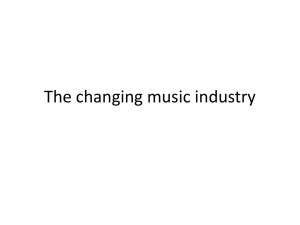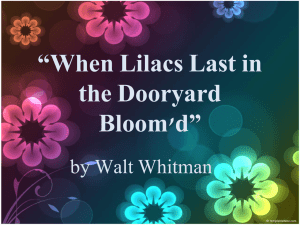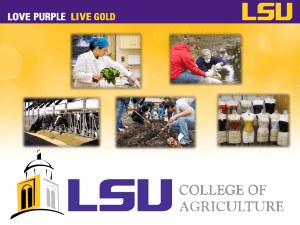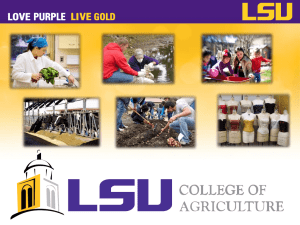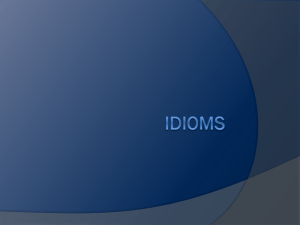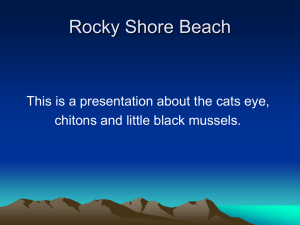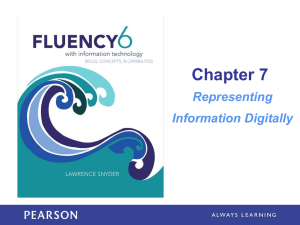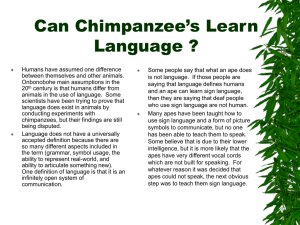Animals as Symbols - Animals and Society Institute
advertisement
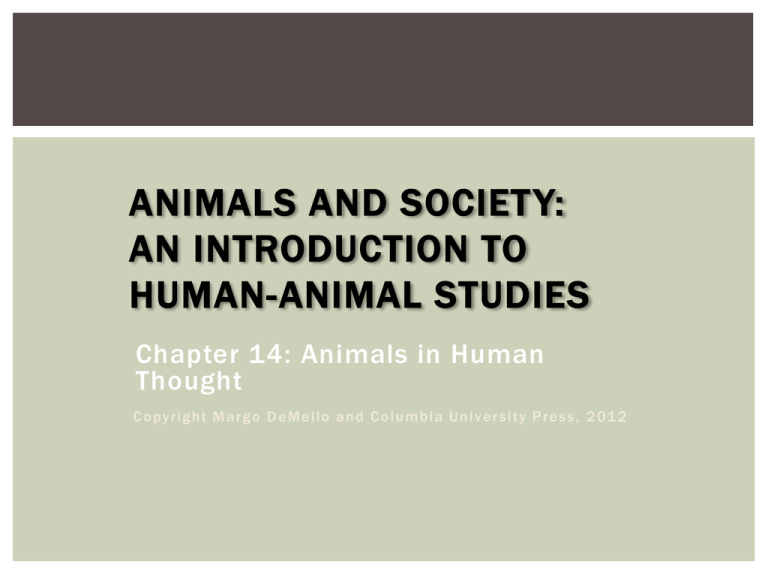
ANIMALS AND SOCIETY: AN INTRODUCTION TO HUMAN-ANIMAL STUDIES Chapter 14: Animals in Human Thought C o py r i g h t M a r g o D e M e l l o a n d C o l um b i a U n i v e r s i t y P r e s s , 2 01 2 ANIMALS IN LANGUAGE Words about animals shape our understanding of animals. Once an animal has been classified as a pet, it would, in our culture, be dif ficult to turn that animal into meat. Similarly, we don’t think twice about consuming animals that have already been classified as livestock. Language then both reflects cultural values and practices, and shapes those very same values and practices. So if language shapes how we see the world and teaches us cultural values and norms, what does it say about how we see the world when we use words like dog, cow, or fox to describe people, or when we call someone bitchy, catty, or chicken? ANIMALS IN LANGUAGE What are the implications of calling people by animal names, especially when those names are used as pejoratives? Animal pejoratives reinforce attitudes towards marginalized humans by comparing them with another marginalized group: animals. Negative animal imager y of ten used to disparage humans, especially women and minorities. Words like bitch, cow and sow almost exclusively refer to women and girls only, and imply a number of negative traits, like stupidity, passivity, moodiness and obesity. Calling a woman a dog or a pig not only implies that that woman is ugly or fat, but it says something about all women as well: that they are to be judged primarily on the basis of their physical appearance, and that if they fail in achieving the cultural standard of beauty, then they deser ve to be called an animal. Words like vermin, cockroaches and rats were used to refer to Jews in Nazi Germany, and African American men were called animals during and af ter slaver y. Calling people animals like this makes them “other” and allows us to more easily kill them ANIMALS IN LANGUAGE How does using animal terms to refer to people, or animal idioms, impact the real-world treatment of animals? Language is never neutral—it shapes behavior. Animal pejoratives denigrate certain categories of people — women and minorities, primarily —but they denigrate animals as well. ANIMALS IN LANGUAGE Creating pejoratives from the names of animals humans establish distance between themselves and the animals they regularly abuse. The fact that dog, cow, pig, sow, bitch, and chick are all thought of negative terms means that those animals are thought of negatively. A woman who is called a cow is thought to be fat and dull; likewise, the animal, the cow, is thought of as dull. A dull animal is an animal who, ultimately, deserves to die. In addition, phrases like “skin a dead cat” contribute to a permissive social attitude towards the abuse of animals. Negative animal idioms normalize or trivialize violence towards animals. When sayings like “flog a dead horse” are used and become a normal part of our vocabulary, we can no longer “see” the implications of human violence against animals. ANIMAL IDIOMS Bleeding like a stuck pig Cook someone's goose Dead as a dodo Got bigger fish to fry Killing two birds with one stone Like a chicken with its head cut off Like a lamb to the slaughter Not enough room to swing a cat Shooting fish in a barrel So hungry I could eat a horse Take the bull by the horns There's no sense beating a dead horse To let the cat out of the bag To shoot the bull ANIMALS IN LANGUAGE In addition, the language used in animal industries serves to depersonalize and de -animalize animals: breeding stock, machine, research tool. Terms like meat serve as absent referents, mystifying the animals who were transformed into meat. Most negative animal idioms about companion animals are about cats. This reflects a long history of cats being mistrusted and mistreated; that’s where the phrases come from: cats really were at one time stuf fed in bags and drowned, skinned, and swung around. The treatment of animals is shaped by another linguistic practice as well. It is linguistic convention in popular media to refer to animals as “it” unless the writer or speaker knows that the animal in question is male or female. ANIMALS AS SYMBOLS Throughout history, and all around the world, various cultures have used animals as symbols. The meaning of symbols depends on the cultural context in which they appear, and shape how we think about things. Animals are used to symbolize a whole host of characteristics that we see in ourselves, or want to project onto others, but that may be dangerous or foreign to us. Thus animals can be lustful, deceitful, murderous or promiscuous. They can also symbolize more positive qualities like love, altruism, and sacrifice. we both bestialize people and humanize animals. And while we can use animals to highlight a person’s good qualities (brave like a lion), we more commonly use animals negatively (cunning like a fox), and especially to denigrate racial minorities. In the Middle Ages, books called bestiaries were extremely popular, which were filled with images of animals, a bit about their natural history, and what the animals symbolized, accompanied by a moral lesson ANIMALS AS SYMBOLS Why are animals so commonly used as symbols? Anthropologist Claude Lévi-Strauss, in his work on totemism, said that animals are chosen as totems not because they are good to eat, but because they are “good to think (with).” In other words, animals have great metaphorical potential, and, for Lévi-Strauss, they are especially useful for representing social classifications like clans and other aspects of kinship systems. Ancient and traditional cultures both saw animals as closely related to humans, so it made sense that they would be incorporated into human symbolic orders, and used to represent human behaviors, desires, and dreams. ANIMALS AS SYMBOLS But why do we choose some animals to symbolize specific things? On the one hand, symbols are arbitrary. But in the case of animals, there is generally some kernel of truth at the root of the animal’s symbolic association —some aspect of its biology or behavior that make humans interpret it in a particular way. Cats, for instance, can be symbolic of bad luck, of evil, or of witchcraft in Western cultures. Why the cat was chosen, and not, for example, the dog, tells us something about both cats (who famously see in the dark) and about the people in the cultures that use cats in this way. ANIMALS AS SYMBOLS Often what we see in an individual animal is obvious: ants often symbolize teamwork and discipline, the deer grace and sensitivity, the snake, because of its ability to shed its skin, regeneration, and the rabbit quickness. Rabbits are linked to sexuality --and particular female sexuality and fertility --in the rituals, myths and symbols of people around the world. The rabbit is also linked to the moon, which itself is linked to fertility and childbearing. Rabbits are also used to signify rebirth, explaining the rabbit's role in the symbols of Easter. ANIMALS IN ARTWORK Animals’ symbolic attributes also make them fine subjects for artist representation. They have been used by artists as a decorative motif, to represent the real place of animals in society, and also symbolically —to represent the same qualities that they represent elsewhere in the culture. Artwork involving animals dates back to the earliest forms of artwork from the Paleolithic era —the European cave paintings from 30,000 years ago featured animals more than they did humans, and included large animals which played a major role in human lives —as predators and prey. Later, with the rise of agriculture in the Neolithic, and the domestication of animals, domesticated animals began to displace wild animals as subjects in artwork. ANIMALS IN ARTWORK In contemporary art, animals, if they appear, are used in very different ways than was found in the past. In particular, it is rare to see animals depicted as symbols anymore, or sentimentally. Some contemporary artists use dead animals, or even kill animals, for their art. These artists are trying to provoke reactions from the public. Other artists use live animals in their artwork. Still other artists working today use their work to directly challenge cultural views about animals, and take a strong position in favor of animal rights. MIRRORS FOR HUMAN IDENTITIES What animals ultimately do, whether used in art, language, or, literature is allow humans to express ideas about human identity. What does our depiction of animals, as well as our use of animals, tell us about ourselves? Ultimately, animals serve to help us understand ourselves and our culture. And as our culture changes in the modern era, so do interpretations and representations of those animals.
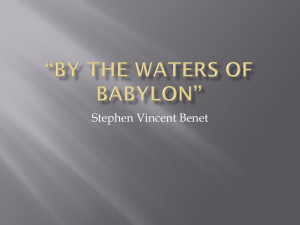

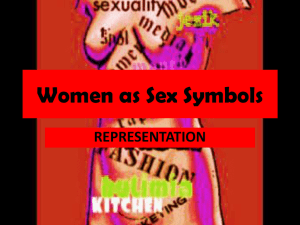

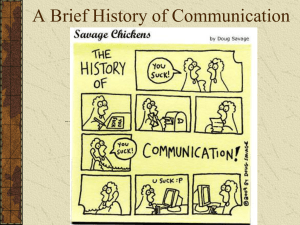

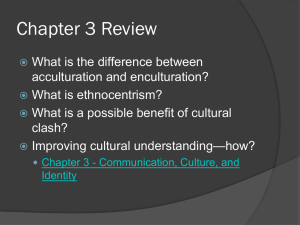
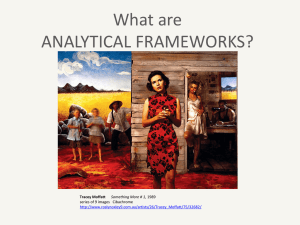
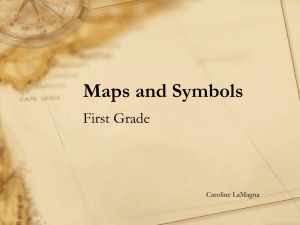

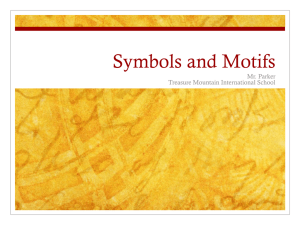
![9[1].2 writing](http://s2.studylib.net/store/data/005278717_1-023577bc235a9be149b22ce8152e1c6d-300x300.png)
